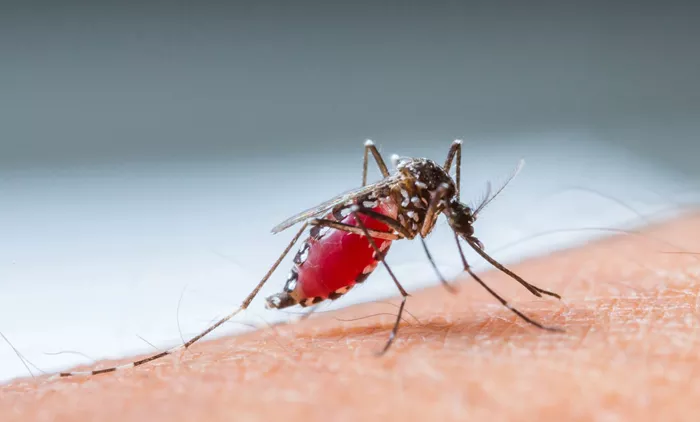A recent study published in npj Viruses highlights how global trends, such as rapid urbanization, increased international travel, and the expansion of mosquito habitats, are raising the risk of a potential yellow fever (YF) pandemic. The research points to how these factors could facilitate the spread of the yellow fever virus (YFV) across more regions.
Yellow fever is a viral disease that affects humans and non-human primates. Unlike other mosquito-borne diseases, people infected with YFV carry high levels of the virus, which makes them efficient hosts for transmitting the disease through mosquito bites.
The Aedes aegypti mosquito, a primary urban vector, thrives in human environments and can spread the virus quickly in cities.
The disease originated in African forests and was brought to the Americas via the transatlantic slave trade before the 1600s. It quickly spread to port cities on the U.S. East Coast and across the Americas, sparking epidemics that persisted for centuries.
In the 1930s, a vaccine was developed, and yellow fever transmission was eventually controlled in the Americas. However, the virus still circulates in forests in regions like Sub-Saharan Africa and parts of the Americas, where it can spill over to humans and cause outbreaks.
In recent years, urban yellow fever outbreaks have been reported in Africa, though the causes of these resurgences remain unclear. Experts suspect factors like population growth, low vaccine coverage, and poor mosquito control programs are contributing to the uptick in cases.
The study also warns that yellow fever could spread further, especially as people increasingly travel between regions where the disease is common, such as Africa and the Americas.
Historically, the United States faced devastating yellow fever outbreaks, including the 1793 epidemic in Philadelphia, which claimed 10% of the population. These events led to changes in urban planning and public health strategies.
This year marks the 100th anniversary of a warning by epidemiologist H.R. Carter, who predicted that yellow fever could one day threaten the Asia-Pacific region, a concern that has only become more urgent.
To date, yellow fever has not spread to Asia, but the study warns that the risk is rising. Over two billion people live in Asia-Pacific areas that are home to Aedes aegypti mosquitoes but have no natural immunity to the virus. The researchers emphasize that the rapid global spread of mosquitoes and increased travel may create ideal conditions for yellow fever to spread to these regions, where healthcare systems are not always equipped to handle an outbreak.
The lack of large-scale epidemics of yellow fever in places like Asia and tropical America remains a mystery. Previous outbreaks of diseases like Zika and dengue have shown that conditions for YFV transmission are favorable in these regions, yet yellow fever has not taken hold.
The study suggests that factors such as prior exposure to related viruses, mosquito control efforts, and geography might explain the absence of widespread transmission so far.
The study also outlines how global trends—such as megacities, faster transportation, and growing trade—have increased the risk of yellow fever.
For example, in 2019, over four billion people traveled internationally, many from regions where yellow fever is endemic. The movement of unvaccinated individuals raises the likelihood of YFV being introduced to new areas.
If yellow fever were to spread in a region without strong public health infrastructure, the consequences could be severe. Symptoms of the disease include high fever and hemorrhaging, and in areas lacking effective mosquito control and rapid vaccine distribution, an outbreak could quickly spiral out of control.
The study stresses the need for better preparedness, including improving mosquito control, expanding access to the yellow fever vaccine, and building stronger public health systems. While vaccines are highly effective, production capacity is limited, which could cause shortages during a large-scale outbreak.
In conclusion, the study warns that global conditions make the spread of yellow fever more likely than ever before, and the risk of a pandemic is greater than in previous decades. The scientists emphasize that if such a pandemic were to occur, its high death rate could make the COVID-19 pandemic seem minor in comparison, leading to a catastrophic global health crisis.
Addressing the threat requires significant investments in research, vaccination programs, and mosquito control measures to prevent a potential yellow fever outbreak.
Related topics:
- New Method Enhances Rmst Analysis For Clinical And Epidemiological Research
- Ultra-Processed Foods Make Up Nearly Half Of U.S. Grocery Purchases
- New Mpox Strain Detected In Several European Countries: What You Need To Know


